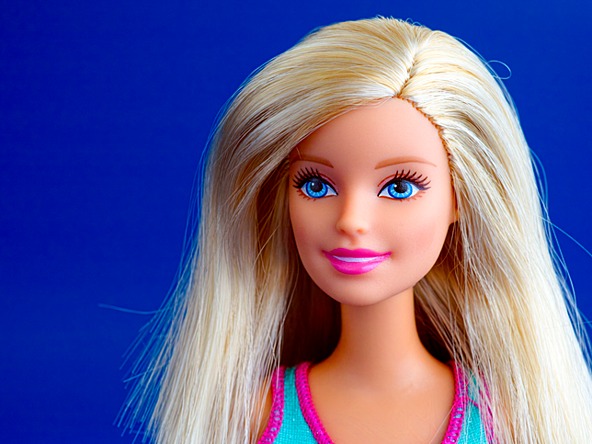Barbie: Understanding a cultural icon

Cultural icons create emotional connections with people, which in turn, influence our beliefs, values, emotions and ultimately behaviour. Cultural icons define specific aspects of society at a given point in time. Barbie is one such icon – whether you love or loath her, she has left an indelible mark on society.
This week, Barbie becomes a movie star, with Margot Robbie in the title role and Ryan Gosling as Ken in a live action adaption. Perhaps understandably, the release of the movie has stirred up the debate about Barbie’s cultural significance.
Defining a cultural icon
Let us start at the beginning; Ruth Handler, the co-founder of Mattel, observed her daughter playing with paper dolls where the dolls were given adult social roles. Largely, dolls of the time were of infants. With the pretext of helping girls to dream, Handler set about creating a doll with adult features.
The doll debuted in 1959 at the American International Toy Fair in New York. Barbie become an instant global phenomenon; in the first year alone, 300,000 dolls were sold.
It is important to be cognisant of the power of cultural icons in helping to shape and determine culture. Naturally, culture is at the very heart of the decisions we make as consumers and so is central to understanding behaviour. From a sociological perspective, icons confer social value and influence, where iconic consciousness occurs when aesthetically shaped material forms signify social value. Through experiencing an aesthetic shape, we understand what an icon means to us.
The notion of influence is based on Durkheim’s principle of symbolic collective representation, which are material forms that have influence among society by conveying values, ideas, and ideologies. As such, these symbols are critical in driving consumer behaviour; ergo, Barbie is not simply a doll, but a material object that shapes and defines culture.
A symbol of cultural debate
Arguably, the social discourse around Barbie polarises, dominated by the intersection of feminist and counter-feminist machinations about Barbie as a representation of a feminine ideal.
Some argue that Barbie is manifest as a symbol of confidence and empowerment for women. Indeed, Barbie is wealthy, of independent means, with a diverse résumé. Her career history demonstrates that girls can do anything that they want, whether that be a model, surgeon, pilot, firefighter, journalist or entrepreneur. Testament to her pioneer principles, Barbie became an astronaut, long before the first American woman went to space in 1983; in 1992 Barbie ran for president and has been on the campaign trail ever since.
Barbie’s influence on culture reaches far beyond her employment, with a wardrobe that has evolved to reflect the trends and styles of the moment. In recognition of Barbie’s enduring influence on popular culture, for a week in 1974, part of Times Square, New York, was renamed Barbie Boulevard.
Intriguingly, while some have argued that the new Barbie movie trailer is a throwback to the doll’s 1960s origins, others note that the trailer cleverly taps into the highly visualised ‘get ready with me’ pop culture, where creators and vloggers upload content about getting ready to go out, such as, selecting an outfit, putting on makeup and doing their hair.
Naturally, there are detractors, not least criticism about Barbie’s unrealistic proportions, huge eyes, diminutive waist, long pencil-thin legs and arched ankles. Indeed, researchers at the University Hospital in Helsinki observed that Barbie lacks the requisite body fat necessary for a woman to menstruate. As such, Barbie’s fictitious body type is completely unobtainable.
There are diversity issues; to make the doll more authentic, in 2016, Mattel released Barbie Fashionistas, that represented different ethnicities and body shapes. In recognition of Barbie’s 60th birthday, a body shape, with a less defined waist, smaller breasts and more defined arms was introduced.
It has been suggested that Barbie has become the very embodiment of the debate about what woman represent, what jobs they might do, how wealthy they should be, whether they should be married, how they should spend their free time and, of course, their appearance. This is seemingly a heavy burden for one doll to bear.
The supposition that there is a feminine ideal is inherently flawed – what constitutes the ideal is fundamentally different for each and every woman. Perhaps the discussion should be less about whether Barbie represents a feminine ideal or not, and more about society’s discourse around being a woman.
Understanding what constitutes Barbie’s social value and influence is to understand popular culture. Whilst controversy persists around ethnicity, body image and gender roles, Barbie has evolved into a cultural zeitgeist, reflecting fashion trends and styles of the moment.
Arguably, if we are to understand consumers’ beliefs, values, emotions and behaviour, we need to understand the social value and influence of cultural icons, whether they be musicians, actors, sports stars, influencers or simply a doll called Barbie.
Julian Adams is associate lecturer at the University for the Creative Arts – Business School and head of research at Motif

We hope you enjoyed this article.
Research Live is published by MRS.
The Market Research Society (MRS) exists to promote and protect the research sector, showcasing how research delivers impact for businesses and government.
Members of MRS enjoy many benefits including tailoured policy guidance, discounts on training and conferences, and access to member-only content.
For example, there's an archive of winning case studies from over a decade of MRS Awards.
Find out more about the benefits of joining MRS here.













0 Comments